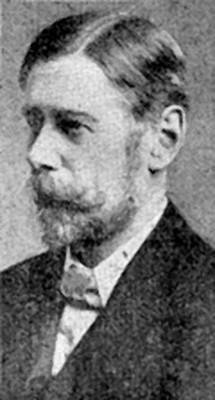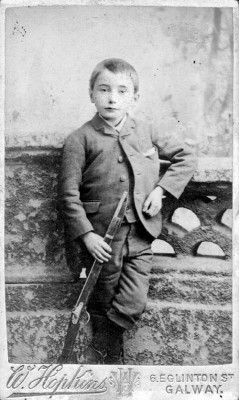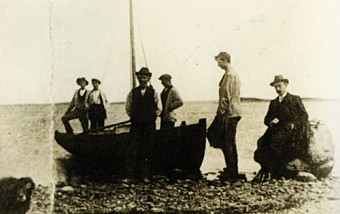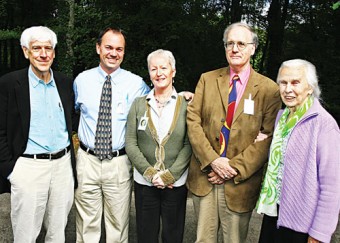Search Results for 'Gaelic League'
18 results found.
Teaching Irish in Connemara 1907

It may sound like a contradiction of terms, but teaching the Irish language in the opening decades of the last century could also be a method of teaching English. Irish was the spoken language in most homes of the west of Ireland, but it was recognised that knowledge of English was essential when emigration was usually the only way a young man or girl could better themselves. It is to the great credit of the Gaelic League, established in 1893 to promote the teaching of Irish in all national schools, that it recognised that fact. The Gaelic League, like its near contemporary the GAA, idealised the culture and way of life of the surviving Gaeltacht areas; and its success was largely due to its understanding that a bilingual approach would best serve everyone’s purposes.
Pádraic Ó Conaire, prince of storytellers

“A short walk on the gravelled path and I was before the man I had come to see. There was a great peace about him as he sat there, leg crossed upon leg, hat rakish on his head, mute in the sculptured dignity of stone. Ever since I had learned the Gaelic, I had loved him, this strange man of dreams whose friends were the birds and the furry people of the wood, the wind and the small white stars.
Two men of destiny meet on Tawin Island

In his interesting biography of Eamon de Valera*, Diarmaid Ferriter reports that in December 2000 gardaí seized 24 love letters from de Valera to his young wife Sinéad, which were being advertised for auction by Mealy’s of Castlecomer. It was believed that the letters were stolen in the mid 1970s from the de Valera family home. The owners, who had bought them in England some years previously in an effort to ensure their return to Ireland, were unaware that they had been stolen.
That strange English passion for Ireland
In the early years of the 20th century the Irish language increasingly was associated with poverty and backwardness. In the national school system, which was established in 1831, children had been beaten with what became known as a ‘tally stick’ if they were caught speaking Irish. Apparently every time a child was heard speaking Irish, a notch was cut on the stick, and the poor child received the same number of blows.
Why are the initials of James Joyce missing from Coole’s famous tree?

What would have happened to James Joyce had he come to the relative comforts of Coole, instead of opting for hardship and exile and the life of a wandering artist in Europe?
Iconic Irish film for St Patrick’s Day with Athlone Film Club
Athlone Film Club is delighted to be taking part in the St Patrick’s Day celebrations by showing the classic Irish film Mise Eire, on Tuesday March 16 at 8pm in the Dean Crowe Theatre.
Books on my table this Christmas
I have often been intrigued by the stories of German spies parachuted into Ireland during World War II. It was quite an intriguing time. De Valera was anxious to steer the country in neutral waters, despite serious pressure from Britain and America to at least open our ports to the transatlantic convoys which were being hammered by German U-boats. The IRA and its sympathisers, were pro German to such an extent that Germany believed it could foster a lot of trouble in Britain’s ‘back yard’ by encouraging the IRA to make mischief.
Opening a door on the Clarinbridge community
Not so long ago December 8, the feast of the Immaculate Conception of Mary, a day when schools were closed, was the start of Christmas for most people. There were not the long gruelling hours of late-night shopping that are par for the course today. Perhaps in the final days before Christmas, most shops would open late; but generally in the weeks leading up to December 25, it was the normal week’s opening times. Believe it or not, everyone got their shopping done.

